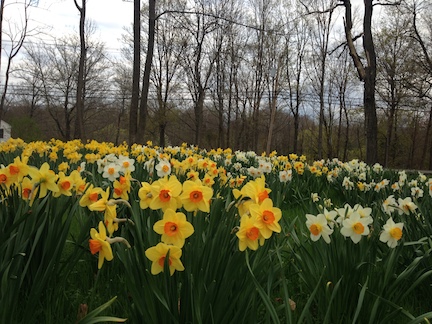A Decade of Daffodils at Schoolfield: Maybe It’s Not Mayfair Yet, But Good Enough for Me.
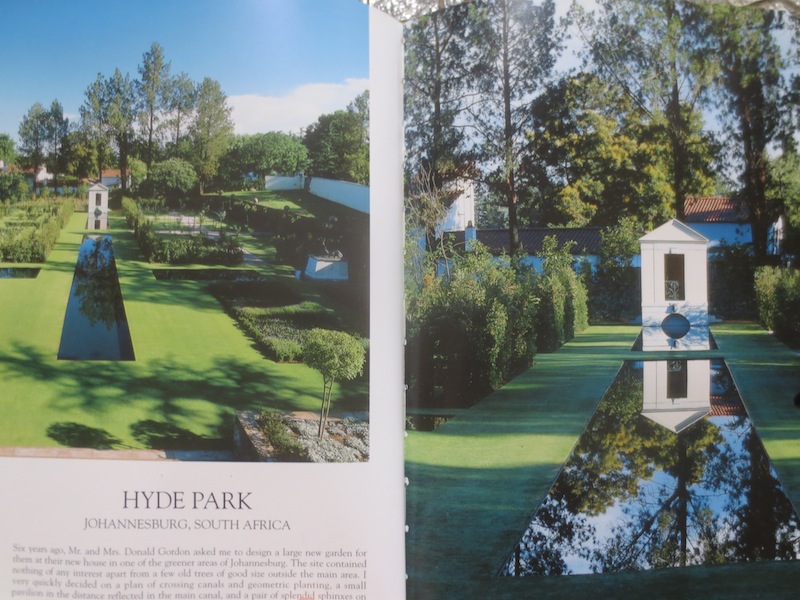
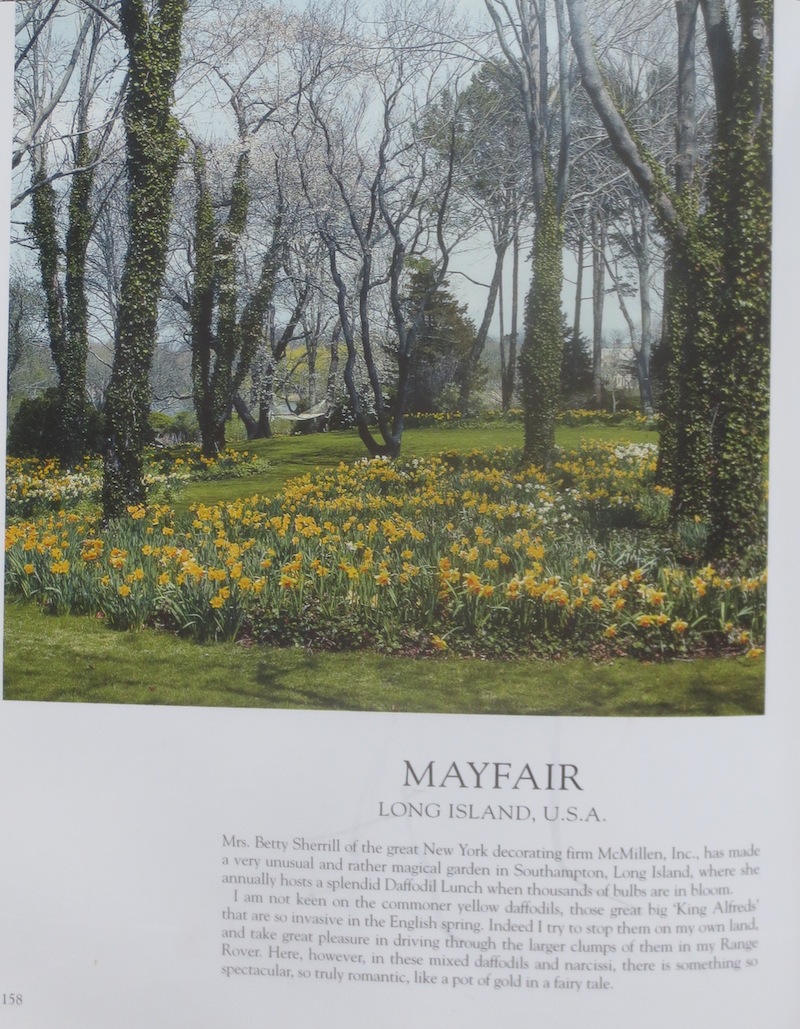
I find My Kind of Garden by David Hicks to be one of the best sources for garden inspiration out there. In addition to highlighting his favorite show-stopping gardens from around the world, there are great reference sections on garden structures, garden furniture, and ornaments. Although I may never have a garden even remotely approaching the chic tone of Hyde Park in Johannesburg the pictures of the gardens Hicks selected for his tome offer elements that can be easily adapted into one’s own, even by those with financially limited resources or who source their building materials at Lowe’s materials (I fall into both categories). The inspiration for my daffodil woods at Schoolfield came from a picture of Mayfair, Betty Shirell’s Southampton estate, I found in the book in fact. Under trees whose canopies had not fully leafed out, amongst masses of daffodils along the edges of her lawn, Ms. Shirrell hosted her fabulous annual Daffodil luncheon each spring. Hicks wrote that while he was “ not keen on the commoner yellow daffodils” “in these mixed daffodils and narcissi, there is something so spectacular, so truly romantic like a pot of gold in a fairy tale.” I was in full agreement. The effect of the masses of white and gold contrasting with the spring green lawn was magical. I decided I would create a springtime jonquil fantasia on the edge of my own woods, and in turn host a spectacular lunch there each spring.
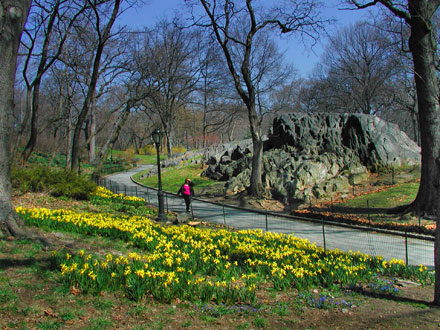

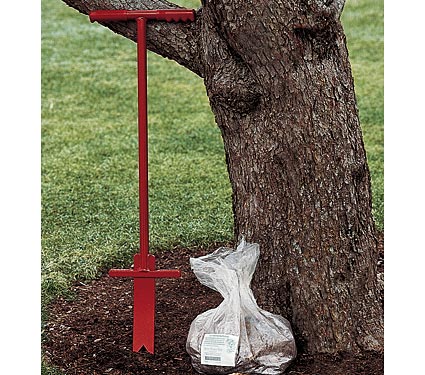
Daffodils are as close to a foolproof choice for the novice gardener as one can get, barring plastic plants. They require little care, and multiply over the years if properly sited and planted. The bombastic burst of color in early spring knocks the vestigial winter doldrums out of one’s psyche with a bang. Though even a small number can liven up a corner of a garden or brighten up a smaller space, nothing compares to the sheer bravura of large swaths of them. In addition to the photo of Mayfair in the Hicks book, I was also inspired by the drifts of daffodils growing on the gentle slopes along the paths in Central Park. To achieve these looks, it appeared that at least a thousand bulbs would need to be planted. I accepted the fact that this could take me years. That autumn I began, cautiously purchasing 100 bulbs, not only discover how long they would take to plant, but also how large an area they would cover. I tried to heed the advice of garden books, and dig larger holes several feet wide that multiple bulbs could be planted in at once, as opposed to planting them singly. The rock and heavy clay, laced with a network of tree roots on my property soon put an end to that notion. It nearly impossible to find many places that would yield holes that wide. I had to resort to the single bulb method. Initially I tried a traditional bulb-planting tool, which some people swear by. The problem with that was even if I didn’t hit a rock or root and managed to dig a 6-8 inch deep hole, the clay was so compacted inside the tool that it was hard to dislodge. It was slow going, but I was encouraged by the initial results the following spring. I did some research for the next planting season and was lucky enough to discover this bulb planter from White Flower Farm. Its forked tip allowed me to navigate around rocks and roots. What took me a weekend to plant the year before was accomplished in a couple of hours. Soon, I was planting 300-500 bulbs each season, and now can get 75-100 in the ground in a good hour. I will admit I tend to be little careless, and probably have a higher mortality rate than the average gardener, but I think of it in terms of economy of scale.
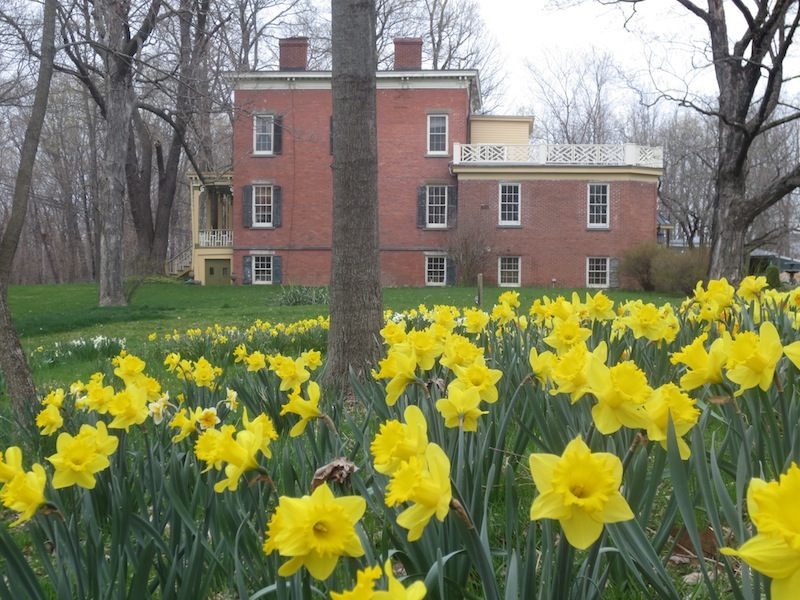
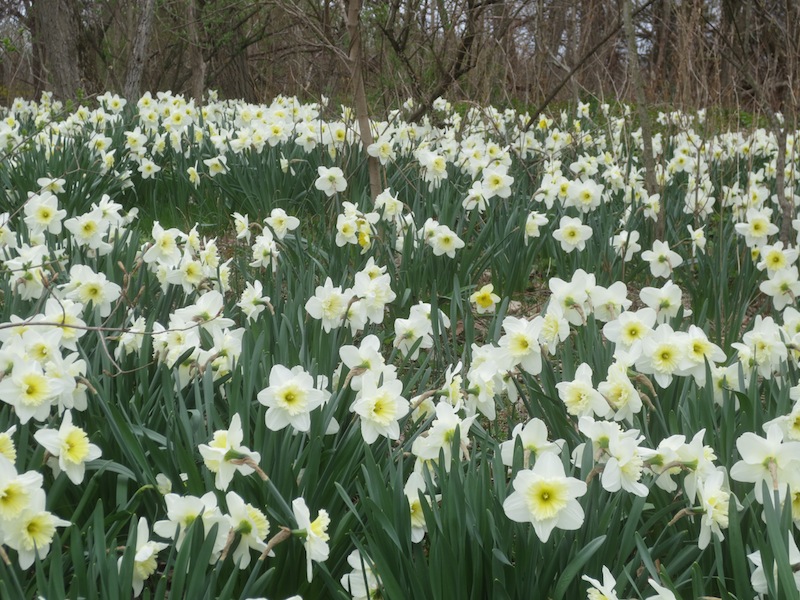
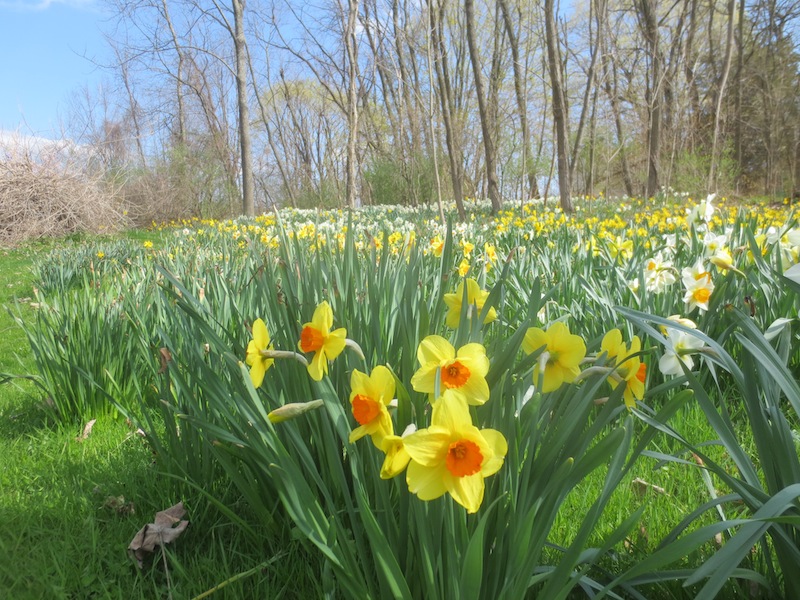
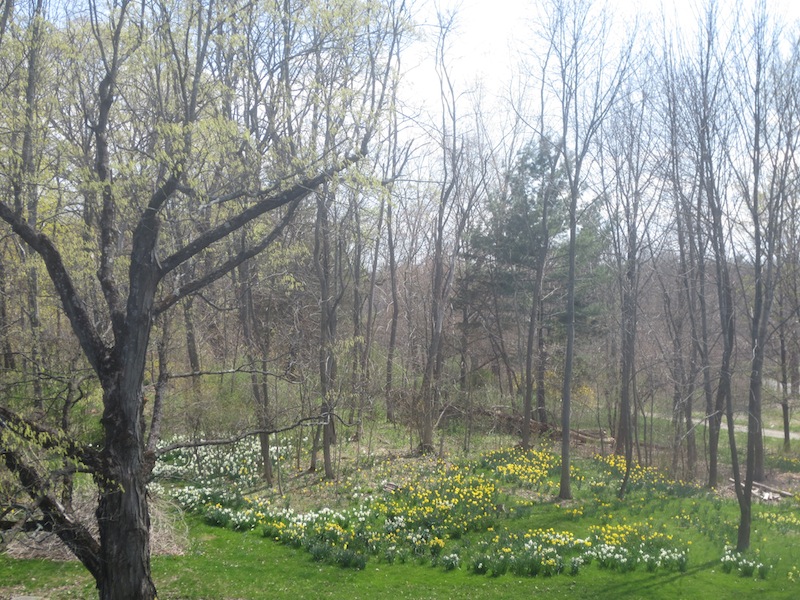
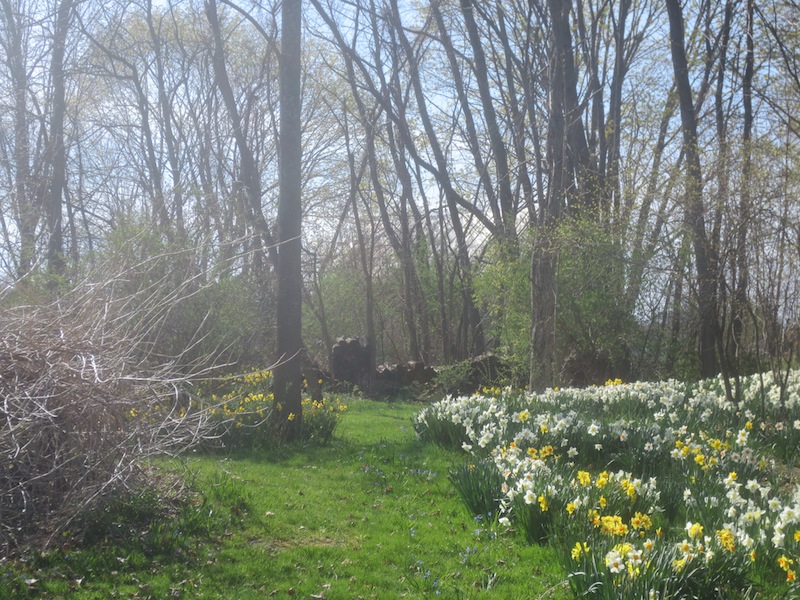

Early on I tried to plant a wide variety of different daffodils and narcissi, but soon came to realize that en masse, I could stick to three or four basic varieties offering plenty of contrast to each other. I gravitate towards variations on the Dutch master or King Alfred for a strong yellow Ice Follies for a white contrast with some Delibes or Fortissimo thrown in for some multi-hue variation. My choices often dictated by price. Within 5 years, people started to stop and take note. After a decade of planting, my woods take a gold and white glow each spring. Each year I continue to plant, and each year the bulbs keep multiplying. My daffodil wood, if not quite on the same level of sophistication as Mayfair, still makes quite a statement if I do say so myself. Neighbors slow their cars when they drive by, and strangers often stop theirs, to get out to take pictures. Some day I will invite them all to an annual lunch, and it will indeed be fabulous. Maybe in another decade.

